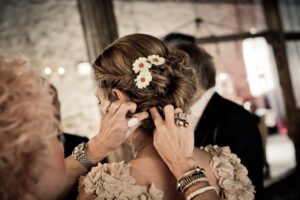
As a mom, you want to make sure your home is a safe and secure environment for your precious little one. Babyproofing your home may seem like a daunting task, but with the right tips and tools, you can create a space that is baby-friendly and induces peace of mind. In this article, we will discuss essential babyproofing tips that every mom should know to keep their baby safe and sound.
Start With the Basics
Begin by going through each room in your home and identifying potential hazards. Secure loose cords and lock cabinets containing cleaning products or sharp objects. Make sure furniture is stable and cannot be easily tipped over by curious little hands. Consider installing safety gates at the top and bottom of stairs to prevent falls.
After you’ve tackled the immediate hazards, it’s time to focus on the smaller details that can easily be overlooked. Ensure that heavy books and ornaments are out of reach or securely fastened so they can’t be pulled down. Pay special attention to the corners of furniture; using corner protectors can prevent injuries from sharp edges. Don’t forget about the household plants — some can be toxic if ingested. Research to make sure none of your plants pose a risk, or simply place them in an area your baby can’t access. By starting with these basic steps, you are laying a strong foundation for a child-proof home where your baby can explore safely.
Keep Small Objects out of Reach
Babies love to explore by putting things in their mouths. To prevent choking hazards, make sure to keep small objects such as coins, buttons, or toys with small parts out of reach. Be mindful of items that may fall on the floor and pose a risk to your little one.
Additionally, it’s wise to regularly sweep and vacuum your floors to pick up any unnoticed small items that could pose a choking hazard. Implementing the practice of keeping purses, bags, or any containers that may hold small items higher up, away from your baby’s reach, can further minimize risks. Taking these extra steps ensures your living space is not just clean, but also safer for your baby’s exploratory phase. Remember, it only takes a moment for a curious baby to find something potentially dangerous, so vigilance is key in creating a secure environment.
Secure Heavy Furniture
Bookshelves, dressers, and TVs can pose a serious danger if they are not properly secured to the wall. Invest in furniture anchors to prevent tip-overs that could potentially harm your baby. It only takes a few minutes to install these anchors but could save you from a dangerous situation.
When examining heavy furniture in your home, it’s essential to take a comprehensive approach. Besides bookshelves, dressers, and TVs, consider other items that could be at risk of tipping over. Items like standing lamps, heavy mirrors, and tall stools should also be assessed for stability. If possible, place heavier items on lower shelves or in lower drawers to reduce the risk of furniture tipping over from being top-heavy. Remember, toddlers are naturally curious and may attempt to climb furniture, so ensuring everything is securely anchored not only keeps your baby safe but also gives you peace of mind. Don’t forget to regularly check these anchors and other safety devices to ensure they remain secure and effective over time.
Check Your Home’s Electrical System
Another critical aspect of making your home baby-safe is ensuring your electrical system poses no risk to your curious explorer. Babies and toddlers are naturally drawn to outlets, which can be dangerous. Consider replacing standard outlet covers with sliding covers; they automatically slide back into place when the outlet isn’t in use, reducing the risk of electrical shock. Additionally, cord shorteners or covers can manage loose electrical cords, keeping them out of little hands. For electronics and appliances that are frequently used, secure their cords to the wall or behind furniture to avoid tripping or pulling hazards. Remember, keeping your baby safe includes making the invisible dangers visible and manageable. An electrician can assess your home and look for and address any problem areas that could prove to be a hazard.
Check for Window Safety
Windows can be another potential hazard for curious toddlers who love to climb and explore. Make sure windows are securely locked or have childproof locks installed to prevent accidental falls. Keep blinds cords out of reach or consider cordless options for added safety.
Additionally, installing window guards or window stops is a crucial measure for enhancing window safety. These devices prevent windows from opening more than a few inches, ensuring your little one can’t slip through or get stuck. When selecting window guards, look for models that are easy for adults to open in case of emergencies but secure enough to resist the curious hands of a child. It’s also a good idea to move any furniture that may serve as a climbing aid away from windows to further reduce the risk of accidental falls. Taking these precautions not only helps prevent accidents but also allows you to enjoy fresh air safely with your child.
Create Safe Play Areas
Designate specific areas in your home where your baby can play safely without constant supervision. Use soft padding on floors for crawling babies or invest in baby gates to create boundaries within rooms. This will give you peace of mind while allowing your little one the freedom to explore their surroundings.
Creating a safe play area goes beyond just providing a physical space; it’s about creating an environment that stimulates your baby’s development while ensuring their safety. Opt for non-toxic, washable mats or carpets that are gentle on your baby’s skin and easy to clean. Populate the space with age-appropriate toys that encourage learning and exploration, but make sure these toys are large enough not to be choking hazards and are free from sharp edges or small, detachable parts.
As a mom, babyproofing your home is an important step in keeping your little one safe as they grow and explore the world around them. By following these essential babyproofing tips, you can create a secure environment that allows your baby to thrive without unnecessary risks. Remember, it’s never too early to start babyproofing —prevention is key when it comes to keeping your precious bundle of joy safe and sound.


